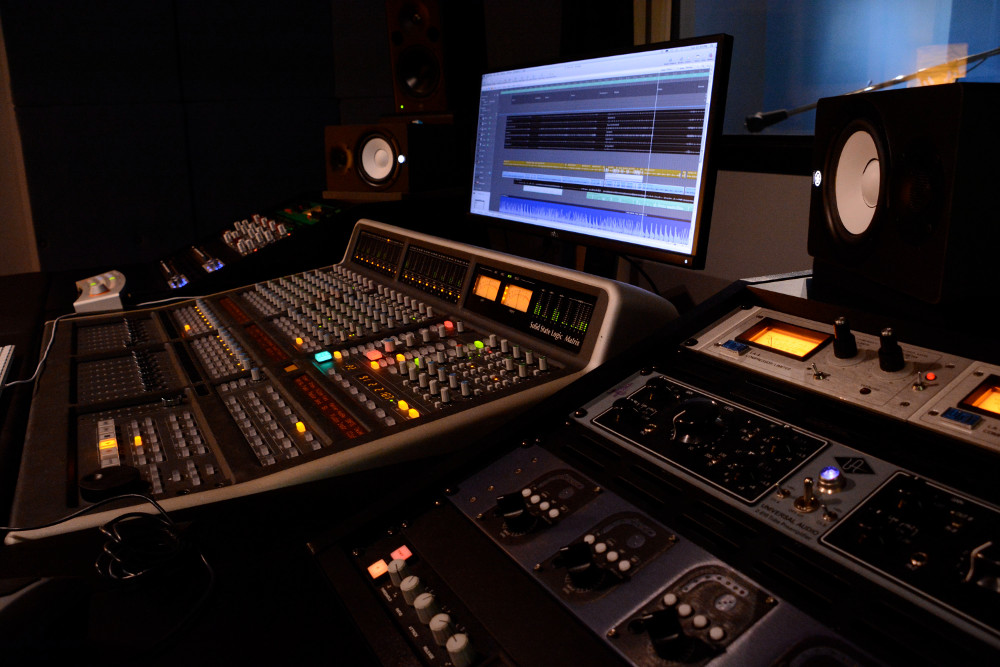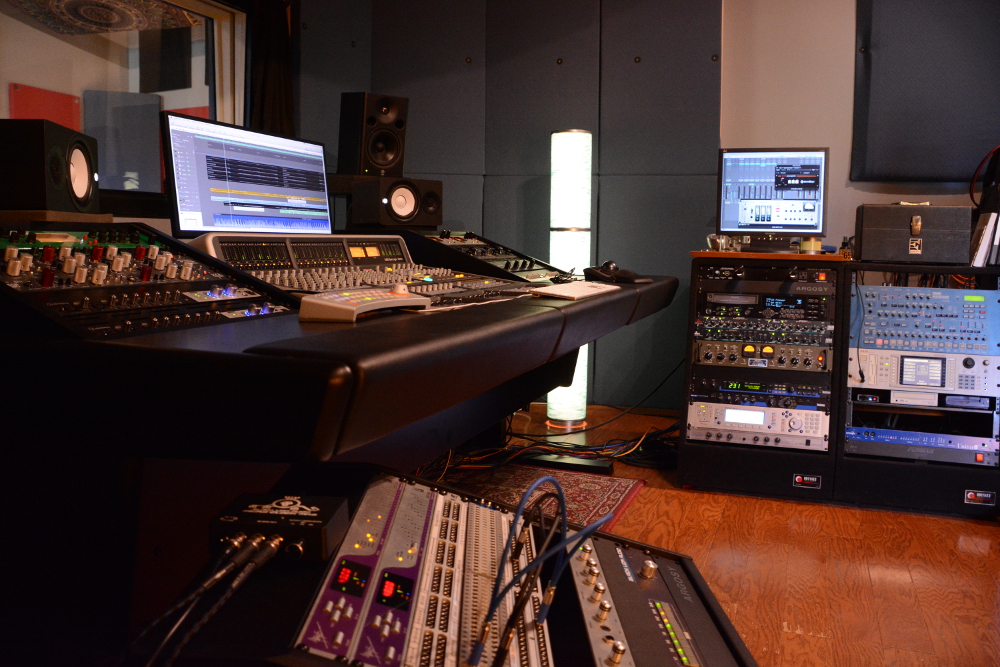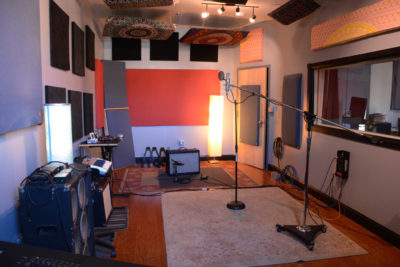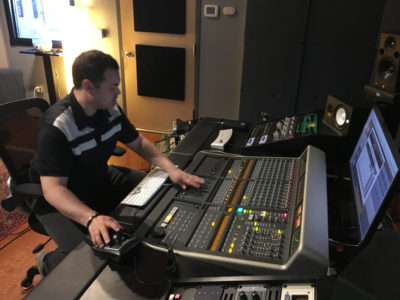Console Switch: How Frequency Recording Installed an SSL Matrix – Step by Step
There comes a time at a studio when change isn’t just desirable – it’s essential.
For Frequency Recording in White Plains, NY, that time arrived in 2016. A combo of Dangerous summing/monitoring and a Mackie control surface, converged with studio founder Rich Fabrizio’s considerable engineering expertise, had brought the 1,400 square foot facility up to in-demand status hosting sessions for Rob Thomas’ Great Unknown album, guitarist Jeremy Bar-I’llan and his “Dragonfly 13” band, plus labels Atlantic Records, Stringtime Jazz, Dead City Records, Ill Adrenaline and more.
For Fabrizio, the studio’s sound was good, but the flexibility for mixing and tracking was what was lacking. While going fully ITB was an option, Fabrizio wasn’t convinced that was the right direction – a true console was beckoning. But recall and maintenance were both considerations he was focused on, as well as his budget.
The solution arrived in the form of a pre-owned SSL Matrix. A small-format 16-channel line-level stereo desk with SSL’s in-line signal path and SuperAnalogue circuits, it also sports multiple layers of DAW control and total recall, plus the ability to connect up to 16 external devices to be used in any combination with any channel insert points. The result: an optimal hybrid analog/digital desk exactly in the sweet spot of fast-moving, small-space operators like Frequency Recording.
But switching to the Matrix was about more than just nailing the console, and Fabrizio knew it. He paid plenty of attention to getting the patchbay right, bringing in big guns to help design it and tie the facility together. Organizational planning – and flexibility – were also a must when it came time to install the board, especially since sessions were in full swing.
Did the Matrix fit into the facility properly, and deliver the sonics he was looking for? What’s the impact the new board actually had on sessions? From there, how did the SSL affect the mixing workflow? For a fully thought out “Console Switch,” read the full report from Mssr. Fabrizio.
Onward to an SSL Matrix
We are all trying to push our creative output to its highest level. The tools we use can impact the final mix and alter the road it takes to get there.
As a musician growing up in the ‘80’s I was hearing songs that were being mixed with cutting-edge tools and effects all over the radio and MTV. Yes… MTV! Something about the records that Mutt Lange, Dave Jerden and Andy Wallace were making all made me take notice sonically.
There was one thing that tied most of these great albums together: They were being mixed on SSL consoles, mostly because they had the largest number of channels for 48 track plus projects. They aggressive-when-pushed or clean-as-a-whistle sound can be appropriate for many styles of music. That versatility makes the Super Analog mixers from SSL a great centerpiece for commercial recording studios.
Outgrowing a Console
Frequency Recording is the home for me, engineer-producer Rich Fabrizio. Opening for business at our current location in June, 2014 the studio operated for the first three years with the rig that had been transplanted from its first location: a system based around Dangerous summing and monitoring with a 16 channel Mackie Control Universal DAW control surface. Most of the processing at mixdown was done using UAD and Waves plugins except for the stereo buss on the Dangerous 2Bus LT.
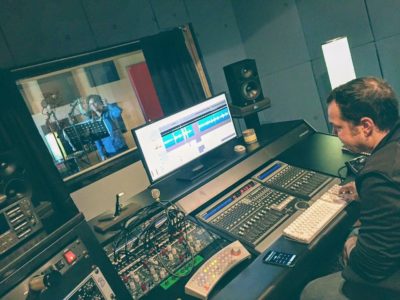
Before: The command center consisting of a Mackie control surface and Dangerous summing + monitoring.
This setup worked well but was not flexible enough for the racks of preamps, analog compressors and multi effect accumulating at Frequency Recording. Full tracking sessions required so many patch cables that some of the mic preamps were covered up and hard to operate. The patchbay system needed a full retrofit to accommodate new gear and hardware inserts. We also wanted to utilize the outboard gear for tracking and mixing in a more static and convenient way.
There were a lot of projects happening over the summer of 2016 and the need for a better cue system came up as well. Talking with fellow mixers and engineers that work in the room, most felt moving fully in the box with PT HD was the way to go. I started to search for other solutions and consulted with manufacturers and retailers to find the best fit for the budget.
Selecting the Desk
The main criteria for the new desk was that it had a DAW layer, sounded big and had some type of recall. Buying a vibey 16-channel vintage desk was an option, but the lack of recall and maintenance were both strikes. The SSL AWS line and Neve Genysys were on my radar for years but still too pricey. I needed to make this all happen for about $15k.
I was on the phone with Vintage King talking about the studio and exploring a new PT HD system and Avid S3 Controller. The thought of purchasing a new computer and expansion chassis to run the latest version of PT seemed daunting at a time when the studio was booked daily.
Darrin at VK sensed my hesitance toward the purchase and asked some more questions as good salespeople do. The answer to my monthlong search came when Darrin said they had just taken in a used SSL Matrix console. The Matrix hit all the marks: DAW controller, stereo cue and auxiliary sends, recallable and it sounds BIG! These are just a few of the console’s features, but its namesake (The Insert Matrix) is an elegant way to insert gear for tracking and mixing with full patching recall.
Now with its newly released software V3 it can utilize the Delta fader automation for editing and recording analog faders in the DAW. The other crucial factor was having the SSL name in the studio’s gear list.
Planning the Install
The control room retrofit required new patchbays and some additional compressors and preamps to fill the 16×16 Insert matrix. The console also required a new Argosy custom desk built for the console with racks on the sides. In addition to the desk a ten space low-profile Argosy floor rack was added.
Marc DeGeorge at SSL was very helpful with the patchbay design and recommended the optimal way to arrange the center section. We spoke on the phone numerous times before finalizing the design for fabrication by Mr. Patchbay in Texas. Cepahs Jackson at Omega Studio in Maryland and Midnight Bob Shuster were both crucial to the design and layout.
The three 96-point bays and one 48-point bay tie the live room, amp closet and console together. Minimal patching can be accomplished with normals from the main patch panel into the first 16 channels of mic preamps. Anything patched with the insert matrix will be saved with console software so recalling a tracking setup is much easier if needed. With all the elements that were changing in the control room the patchbay required the most attention to detail. It is working great and as expected!
Load In
The timing of the console arrival and the manufacturing of the desk were not ideal. The SSL arrived in the beginning of September and sat on a Z stand at the back of the control room for a month before the desk arrived from Argosy.
The installation took place the second week of October with help from Jake Cohen and copious amounts of coffee and green tea. I had slotted out four full days to knock down the old rig and get operational but day five came and we had to push sessions back. We labeled all the cabling which added a few hours to the task and had some issues assembling the desk with mis-drilled holes.
I had to learn how to operate the Matrix and get to know how it sounded! I calibrated the VU’s and set up the consoles metering and mix buss processing for the first day’s sessions. The first night of playing back through the board was fantastic. The sound was bright and powerful and was making my monitors work harder than they had with the previous summing rig. This was a much wiser of an investment then I had realized sonically.
Growing Pains
The first few sessions didn’t go very smoothly. Immediately we noticed the jog wheel didn’t function as it should. After speaking with SSL in New York and Los Angeles it was determined that the encoder needed to be replaced.
In addition to the jog wheel encoder the inserts were all very intermittent and distorted. The entire control room had been rebuilt. We had to determine if the noisy inserts were from new cabling, patchbays or the console. Bob Shuster made service calls twice to install new parts from SSL in NY and the U.K. Marc and Andrew at SSL were very helpful and Vintage King expedited the ordering of parts.
There are still a few gremlins in the console, but I’m expecting to have them worked out within the next month. The months of planning paid off but there were definitely some things I’ll improve for future major upgrades. A few issues with cable lengths and rack depths determined where some gear had to be installed, unfortunately. Everything feels right now that it’s been five months operational with the SSL Matrix.
Hip new Sound of Today
Some of the trendy sounds of today’s popular music are low-end and upfront dry vocals. The “Super Analog” sound of the SSL can give you that powerful clear top end and very deep extended bass.
One of the first things I had to compensate for was the way the low-end was sounding in the room with the Matrix. I had worked with my mastering engineer Larry Lachmann to overcome the ever-present bass null at the listening position when opening up in 2014. Playing back sessions on the SSL I could immediately hear the bottom was more focused and fuller in the listening position.
I had just finished mixing 14 songs for R&B-soul artist Jonny Parks when the the console became operational. I brought up the mixes and routed them through the SSL. Immediately I noticed how the drums had more transients and the bass could hit harder without seeming overwhelming.
These already approved and detailed mixes were a great way to test the board out. Removing some plugin reverbs on the vocals and drums really brought the songs closer to what we were shooting for. I sent a few of the approved mixes back to the client and he heard the big improvement as well!
One of the big changes to the mixing workflow is having all the analog multi effects on sends from the console and being able to automate the analog channels after the dynamics processing. There are 32 analog “DAW inputs” if you use the input layer and source them to the stereo cue. Coming from an eight stereo pair summing amp this is a big leap forward. The multi-bus set up of the console is great for adding some parallel compression or having control over the artist’s headphone level.
The console has added additional layers of gain staging with the SSL line amps on the first sixteen channels and control of the master fader and mix buss level. Being able to drive the mix buss harder into the stereo processing chain lets you print alternate versions of the same mix with different compression and saturation.
All the engineers that have mixed in the room on the SSL have commented on how accurate and powerful their mixes are sounding. Thanks to everyone involved with the install!
- Rich Fabrizio, frequencyrecording.com
Please note: When you buy products through links on this page, we may earn an affiliate commission.







